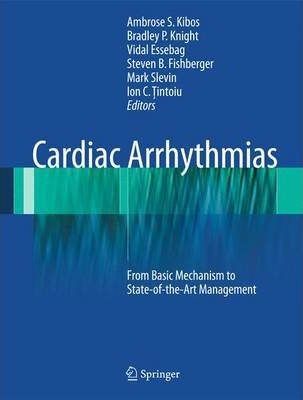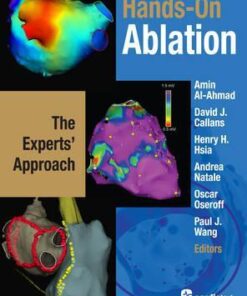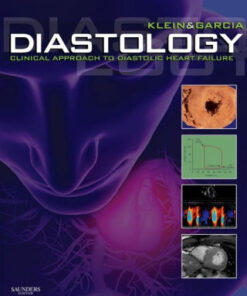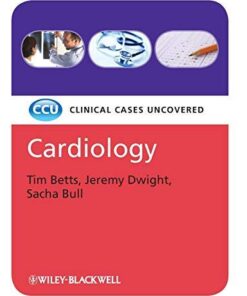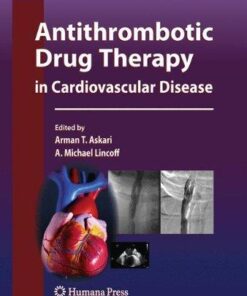(eBook) Cardiac Arrhythmias by Ambrose S. Kibos, Bradley P. Knight
$18.00
Download instantly Cardiac Arrhythmias – From Basic Mechanism to State-of-the-Art Management by Ambrose S. Kibos, Bradley P. Knight, Vidal Essebag, Steven B. Fishberger, Mark Slevin, Ion C. Tintoiu. It is ebook in PDF format.
ISBN-10: 1447153154 ISBN-13: 9781447153153
Preview
This is the PDF eBook version for Cardiac Arrhythmias – From Basic Mechanism to State-of-the-Art Management by Ambrose S. Kibos, Bradley P. Knight, Vidal Essebag, Steven B. Fishberger, Mark Slevin, Ion C. Tintoiu
Table of Contents
Frontmatter
1. Anatomy and Physiology of the Atrioventricular Node: Basic Concepts
2. Anatomy and Physiology of the Atrioventricular Node: What Do We Know Today?
3. Molecular Basis of Arrhythmias Associated with the Cardiac Conduction System
4. Functional Anatomy in Arrhythmias and Vascular Support of the Conduction System
5. Autonomic Control of Cardiac Arrhythmia
6. Neural Mechanisms of Arrhythmia
7. Understanding the Genetic Basis of Atrial Fibrillation: Towards a Pharmacogenetic Approach for Arrhythmia Treatment
8. Importance of Isthmus Structure in the Right Atrium
9. Channelopathies and Heart Disease
10. Late Open Artery Hypothesis and Cardiac Electrical Stability
11. The Clinical Utility of 12-Lead Resting ECG in the Era of Ablation Strategies
12. Long-Term ECG (Holter) Monitoring and Head-Up Tilt Test
13. Echocardiography in Arrhythmias
14. Electrophysiologic Testing and Cardiac Mapping
15. How to Differentiate Between AVRT, AT, AVNRT, and Junctional Tachycardia Using the Baseline ECG and Intracardiac Tracings
16. Recognizing the Origin of Ventricular Premature Depolarization During Sinus Rhythm and During Non-sustained Tachycardia
17. Detection and Management of Atrial Fibrillation in Patients with Stroke or TIA in Clinical Practice
18. Ventricular Arrhythmias During Acute Myocardial Ischemia/Infarction: Mechanisms and Management
19. Arrhythmias and Hypertrophic Cardiomyopathy
20. Lai Tai, the Mysterious Death of Young Thai Men
21. Cardiac Arrest Arrhythmias
22. Electrical Storm: Recent Advances
23. Electrical Storm: Clinical Management
24. Cellular Pharmacology of Cardiac Automaticity and Conduction: Implications in Antiarrhythmic Drug Assessment
25. Biophysical and Molecular Targets
26. Proarrhythmia (Secondary)
27. Connexin-43 Expression: A Therapeutic Target for the Treatment of Ventricular Tachycardia
28. Biophysics of Modern Ablation Techniques and Their Limitations
29. Cardiac Imaging to Assist Complex Ablation Procedures
30. AVNRT Ablation: Significance of Anatomic Findings and Nodal Physiology
31. Mechanisms of Atrial Fibrillation
32. Importance of Left Atrial Imaging in Catheter Ablation of Atrial Fibrillation
33. Atrial Fibrillation Ablation: From Guidelines to Clinical Reality
34. Atrial Fibrillation: Should Cardiac Surgeons Be Consulted?
35. Atrial Arrhythmias After AF Ablation: Challenge for the Next Decade?
36. Cavotricuspid Isthmus Anatomy Particularities in Atrial Flutter Ablation
37. Location of Accessory Pathways in WPW: What and How Should We Ablate
38. VT Ablation: Importance of Linear Lesions and Late Potentials
39. Programmed Stimulation During Mapping and Ablation of VT
40. Catheter Ablation in Pediatric and Congenital Heart Disease
41. Interventional Electrophysiology in Patients with Congenital Heart Disease
42. Epicardial Mapping and Ablation of Cardiac Arrhythmias
43. Robotic Ablation in Electrophysiology
44. Strategies for Restoring Cardiac Synchrony by Cardiac Pacing
45. Device Therapy for Bradycardias
46. Pacemaker Dependence After Atrioventricular Node Ablation
47. Pacing Site: From Theory to Practice
48. Implantable Cardioverter Defibrillators in the Pediatric and Congenital Heart Population
49. Sensing Issues in CRT Devices
50. Cardiac Resynchronization Therapy: Do Benefits Justify the Costs and Are They Sustained Over the Long Term?
51. Complications of Cardiac Implantable Electronic Devices (CIED)
52. Peri-device Implantation Anticoagulation Management: Evidence and Clinical Implications
Backmatter
